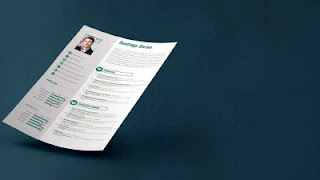Sir Andrew Motion is an English poet and novelist who was Poet Laureate of the United Kingdom from 1999 to 2009.
He has been awarded several poetry awards, including the Arvon Prize, the John Llewelyn Rhys Prize and the Dylan Thomas Prize. He was knighted for his services to literature in 2009.
Here are his top 10 tips for being a successful poet.
1. Let your subject find you
My parents were not writers and they didn’t really read very much either. My Dad once told me he had only read half a book in his life. I had a wonderful English teacher called Peter Way. He walked straight into my head, turned all the lights on and he gave me my life really.
When I was 17, quite soon after I started tinkering around with poems, my mother had a very bad accident, which eventually killed her. So I found myself wanting to express my feelings about that in ways that were relieving to me.
It sounds a slightly self-aggrandising thing to say, but I’ve always thought that death was my subject. You don’t find your subject, it finds you. Writing poems for me is not simply a matter of grieving, though very often it is that, it’s wanting to resurrect or preserve or do things that pull against the fact of our mortality.
2. Tap into your own feelings
I never quite believe it when poets say that they’re not writing out of their own feelings, and when that is the case, I tend not to be terribly interested in what they’re doing.
I don’t mean to say that they are writing bad poems, but those aren’t the poems that I like most. The poems I most like are where the engine is a very emotional one, where the warmth of strong feeling is very powerfully present in the thing that is being given to us. I think poetry is a rather emotional form and when it isn’t that, I’m not very interested in it.
3. Write about subjects that matter to you
I didn’t always cope with being commissioned very happily as Poet Laureate to tell the truth. The best poems get written, not by going in the front door of the subject, but round the back or down the chimney or through the window.
‘Tell all the truth but tell it slant,’ said Emily Dickinson and that’s always been a very important remark for me. It can be quite difficult to do that if you’re standing in a very public place.
People who live in public, as I very suddenly found myself doing, can get very bruised in the process if they’re not used to it. I found all that public stuff extremely difficult to deal with. I never wanted to cut myself off, but wish I had devised better ways of protecting myself.
4. Celebrate the ordinary and be choosy
Honour the miraculousness of the ordinary. What we very badly need to remember is that the things right under our noses are extraordinary, fascinating, irreplaceable, profound and just kind of marvellous.
Look at the things in the foreground and relish stuff that can lose its glow by being familiar. In fact, re-estranging ourselves to familiar things seems to be a very important part of what poetry can do.
If you can, be choosy about what you do, so that the things you do write are the things that you do best.
5. Use everything in your toolbox
I haven’t written a rhyming poem now for many years, I seem to have lost my appetite for it but I haven’t lost my pleasure in reading them. I think anybody that insists on the presence of rhyme is really not thinking hard enough about what poetry is or can be.
Having said that, it is important to bear in mind that as poets we have a kind of toolbox, in which there are all kinds of different pieces of equipment, not available to any other kind of writer and rhyme is very importantly one of those.
So never to use rhyme in your poetry would be a bit like buying a car and never getting out of second gear. Use everything in your toolbox.
6. If you get stuck, go for a walk or wash your hair
Wordsworth once said that the act of walking was closely related to the creative process. I do love walking and if I get stuck I go for a walk or if I don’t have much time, I wash my hair – it seems to wake my brain up!
Even when I’m on a hair washing day, rather than a walking day, I walk up and down my study, just to get myself going.
Poems are so crucially to do with the movement of words through a line or a series of lines, and that is just as important as their shape and the way that we understand them I think.
7. Let your work be open to interpretation
People will interpret your poetry in different ways, but provided the interpretation that is brought to the poem isn’t plainly bonkers, I actually enjoy that, I rather hope for it.
Your poem can be a world in which your readers can go and live themselves and seek out things which resonate for them. And it would be completely bonkers of me to try to restrict their reaction.
In Auden’s beautiful eulogy for Yeats, he said, ‘He became his admirers,’ and I think that’s kind of what he had in mind actually. You give your work over to your readers and provided they’re not crazy, it’s absolutely open to them what they find in it.
8. Read your poetry out loud
Reading your poetry out loud is crucial and absolutely indispensable because wherever we reckon the meaning of a poem might lie, we want to admit that it’s got as much to do with the noise it makes when we hear it aloud, as it has to do with what the words mean when we see them written down on the page.
In a really fundamental way, I think poetry is an acoustic form and we’ve slightly forgotten that in the last thousand years. Since the invention of the book, the aliveness of poetry has been perhaps slightly pushed to the edge of things.
9. Find the right time to write
Find your own writing time. Everybody will have a slightly different time of day, I have yet to meet the person who thinks the early afternoon is good, but I expect there is someone out there who thinks that that’s a good idea.
For me it’s very early in the morning, partly because the house is quiet and partly because I feel I’m stealing a march on things and that makes me feel good.
I think there might be some kind of hook up between what happens in our minds when we’re asleep and writing imaginative material. I think good poems get written, as no doubt good paintings get painted, as a result of these two things coming together in an appropriate way.
10..Read a lot, revise and persevere
Read lots, write lots of course too, but assume that your first thoughts are not your best thoughts, so revise, revise, revise and don’t expect every poem to work, because it won’t.
Don’t go live in an ivory tower. Read the newspapers and involve yourself in the world – where do you think subjects come from if not the world?
Persevere. I think right at the beginning of your writing life you really have to accept that within a few years, or possibly even a few months, you are going to be able to wallpaper quite a large room with rejection slips. But don’t let that put you off – if you’ve got it, you’ve got it!
Culled from BBC














